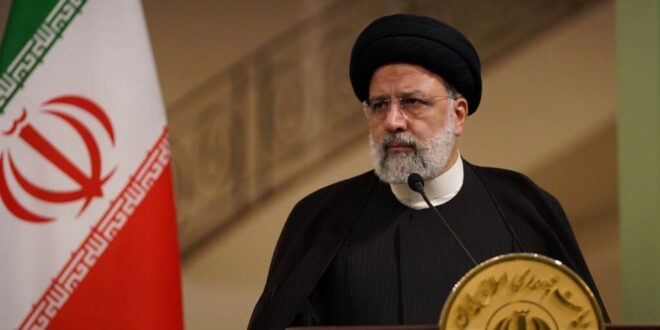Latest Developments
A helicopter carrying Iranian President Ebrahim Raisi and Foreign Minister Hossein Amir-Abdollahian crashed in Iran on May 19. Iranian personnel are still searching for the aircraft, which fell into Iran’s mountainous Eastern Azerbaijan Province. The passengers’ conditions remain unknown. Twenty rescue teams — including rescue workers, dogs, drones, and Iranian military forces — are still searching for the helicopter. Intense fog and the terrain surrounding the suspected crash site has stymied the search so far. Iranian state media say other Iranian officials were also onboard, returning from an event near the Iranian-Azeri border. Two other helicopters that departed from the same point reportedly reached their destinations.
Expert Analysis
“The mass murdering Raisi and his sidekick Amir-Abdollahian may finally be gone — good news for the long-suffering people of Iran and the Middle East. May 19, 2024, may soon become an iconic day in Iranian history that marks the death of the ‘butcher of Iran,’ who has the blood of thousands of innocent Iranians on his hands. At this critical juncture, President Biden needs to express his support for the Iranian people and implement a policy of maximum support to provide Iranians what they need to bring down this brutal regime.” — Mark Dubowitz, FDD CEO
“Iran’s hardline President Ebrahim Raisi has had blood on his hands since at least age 29. He has failed upwards in his career not because of competence, but because of loyalty and zeal. This loyalty is what had him on the alleged short-list to succeed Iran’s octogenarian supreme leader. If Raisi’s death is confirmed, that short-list would have just gotten shorter.” — Behnam Ben Taleblu, FDD Senior Fellow
“There are no tears to shed for a mass murderer like Raisi. This is a moment to seize on any potential instability inside Iran by launching a maximum support campaign for the Iranian people, terminating all sanctions relief for the regime, and forcing Tehran to play defense instead of offense.” — Richard Goldberg, FDD Senior Advisor
The 1988 Massacre
Raisi — the deputy prosecutor general of Tehran from 1985 to 1988 — facilitated the regime’s 1988 slaughter of thousands of jailed political dissidents by serving on a four-member panel known as a Death Commission, which decided who would live and who would die. The commission conducted interviews of prisoners — often just a few minutes long — aimed at determining their loyalty to the Islamic Republic. Questions could include: “What is your political affiliation?” “Do you pray?” “Are you willing to clear minefields for the Islamic Republic?” The wrong answer meant death.
The executions were commonly conducted by hanging or by firing squad, and each typically took place the same day as the interrogation. The commission allowed neither lawyers nor appeals. Burials occurred in unmarked mass graves. The regime waited months before notifying the relatives of the victims, refused to tell them the locations of the bodies, and told them not to mourn in public. The victims included women and children as young as 13. Raisi has defended the killings, saying in 2018 that they were “one of the proud achievements of the system.”
A Bloody Career
In the years following the massacre, Raisi continued his bloody career in the judiciary and elsewhere in the regime until he became president in 2021. He served as deputy chief justice (2004-2014), attorney general (2014-2016), and chief justice (2019-2021). In these capacities, he sought or presided over the prosecution, imprisonment, torture, and execution of countless detainees. From 2016 to 2019, Raisi served as the custodian of Astan Quds Razavi, a massive business conglomerate with a real estate portfolio worth an estimated $20 billion, which effectively functions as a slush fund for Iran’s supreme leader.
Iran’s Supreme Leader Says Government Continues to Function
Following news of the crash, Supreme Leader Ali Khamenei, Iran’s ultimate decision maker, reassured on X that “the administration of the country will not be disrupted at all.” If Raisi is unable to fulfill his duties as president, Article 131 of the Iranian constitution dictates that the first vice president would become Iran’s interim president, assuming Khamenei approves. Within 50 days, a government council — including Vice President Mohammad Mokhber, Chief Judge Gholamhossein Mohseni Ejeyi, and Speaker of Majlis Mohammad Bagher Ghalibaf — would organize a formal presidential election.
 Eurasia Press & News
Eurasia Press & News




